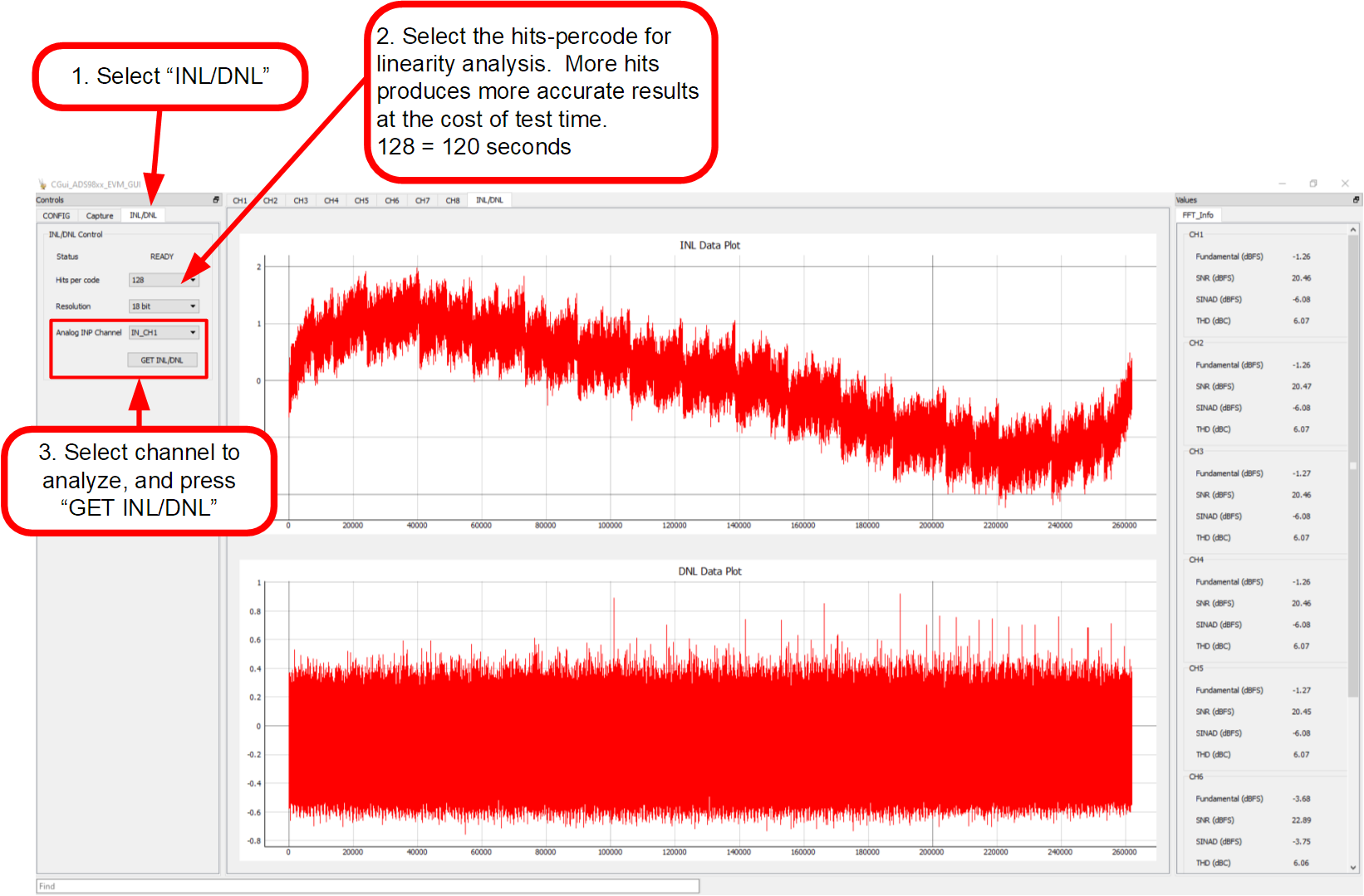SBAU440 April 2024
3.2.5 Using the INL/DNL Tool
The INL/DNL tool measures the linearity of the of the ADS9219EVM by applying a full-scale, low-distortion sinusoidal input signal. The accuracy improves if the number of hits per code is increased at the cost of extra test time. Select the channel to measure and the hits per code. An input signal greater than full-scale is required to verify that all ADC codes are tested. An input signal of +0.1 dBFS is sufficient. Then press the GET INL/DNL button to run this tool as shown in Figure 4-9.
 Figure 3-9 Using the INL/DNL Tool
Figure 3-9 Using the INL/DNL Tool